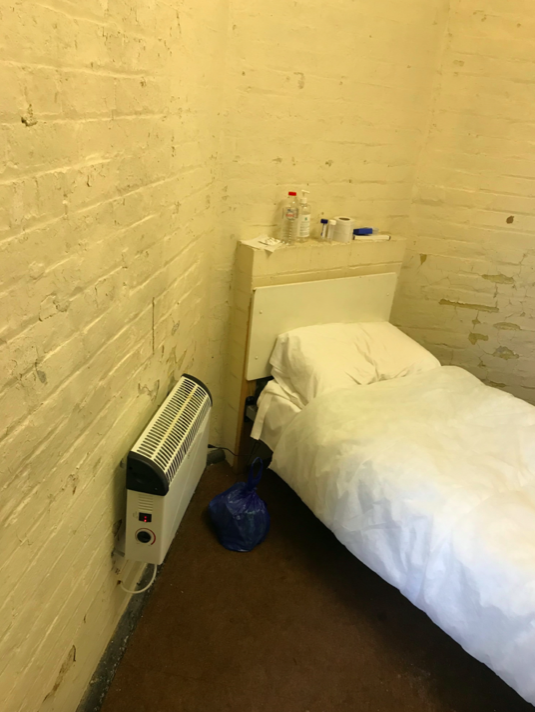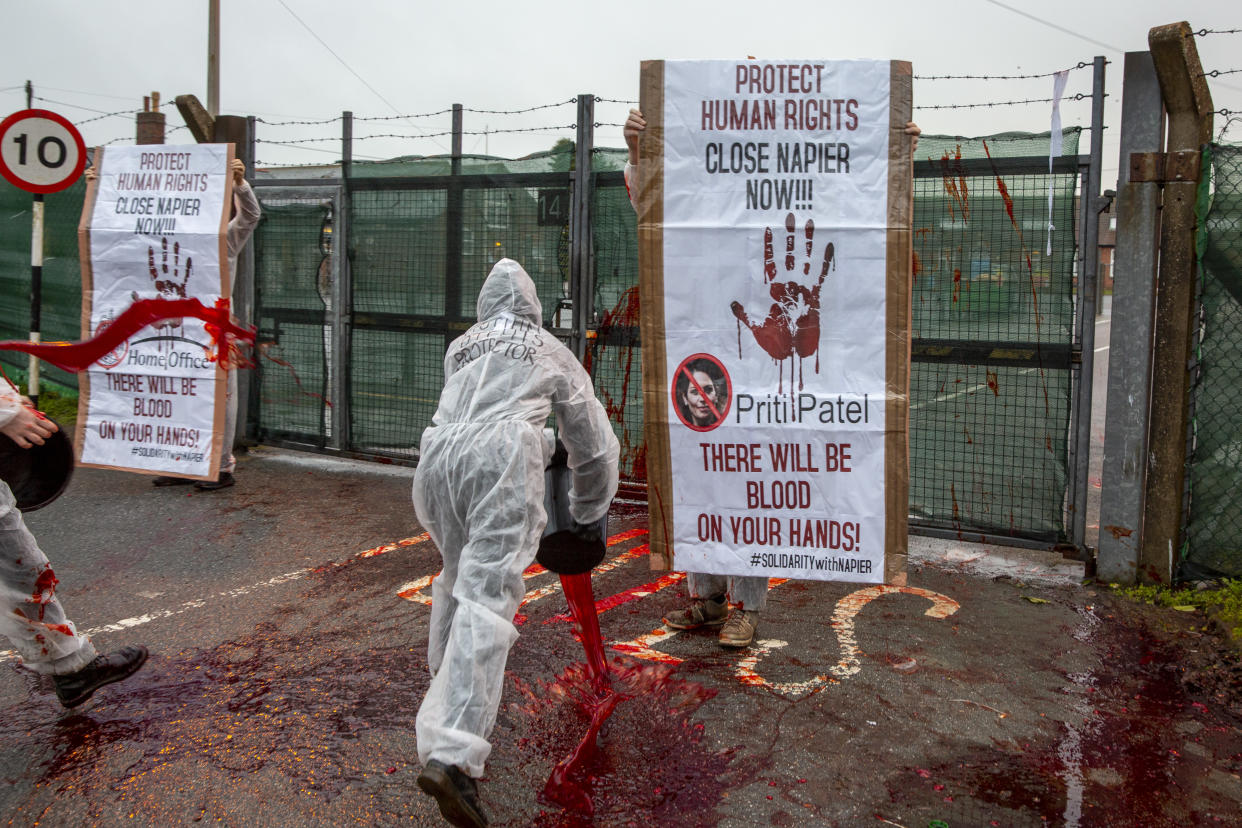Inside the ‘squalid and filthy’ British Army barracks where asylum seekers were detained illegally
Watch: Asylum seekers win High Court challenge over 'squalid' Napier Barracks
These are the pictures that show the “squalid and filthy” accommodation in Kent where asylum seekers and victims of torture were housed illegally.
The pictures show the inside of Napier Barracks where men, all said to be “survivors of torture or human trafficking”, were forced to live.
On Thursday morning, six asylum seekers formerly housed at the former army barracks won a legal challenge against the government after a High Court judge found their accommodation failed to meet a minimum standard.
Napier Barracks have been used to house hundreds of asylum seekers since last September, despite the Home Office being warned by Public Health England (PHE) that it was unsuitable.


The men argued that the Home Office unlawfully accommodated people at the barracks and conditions there posed “real and immediate risks to life and of ill-treatment”.
During a two-day hearing in April, the men’s lawyers said accommodating asylum seekers at the “squalid” barracks was a breach of their human rights and could amount to false imprisonment.
On Thursday, Mr Justice Linden ruled in favour of the men and found that the Home Office acted unlawfully when deciding the former military camp was appropriate.
He said: “Whether on the basis of the issues of COVID or fire safety taken in isolation, or looking at the cumulative effect of the decision-making about, and the conditions in, the barracks, I do not accept that the accommodation there ensured a standard of living which was adequate for the health of the claimants.
“Insofar as the defendant considered that the accommodation was adequate for their needs, that view was irrational.”


The men’s lawyers had argued that moving them to the former Ministry of Defence camp “exposed them to an exceptionally high risk” of contracting COVID.
Almost 200 people tested positive for coronavirus during an outbreak at the barracks earlier this year, senior Home Office officials told MPs in February.
A report published in March said that there were “fundamental failures” over housing asylum seekers in military barracks, parts of which were “filthy”.
Residents at Napier and Penally Camp in Wales reported being shouted at and intimidated by protesters and members of the public who did not want them there.



Inspections by the Independent Chief Inspector of Borders and Immigration (ICIBI) and Her Majesty’s Inspectorate of Prisons (HMIP) published their findings following their inspections.
Inspectors said: “We met many men who described feeling depressed and hopeless at their circumstances. In our resident survey, all of those who responded at Napier and the vast majority at Penally said they had felt depressed at some points.
“At both sites about a third of respondents said they had mental health problems; about a third of respondents at Napier said they had felt suicidal.”
Following today’s ruling, campaigners including Liberty and the Joint Council for the Welfare of Immigrants have called for Napier Barracks to be shut down.


However, the judge declined to rule that the barracks could never be used to house asylum seekers and said his findings were based on the conditions the six men faced.
Responding to the ruling, a Home Office spokesman said that “additional accommodation was required at extremely short notice” at the height of the pandemic.
He added: “Throughout this period our accommodation providers and subcontractors have made improvements to the site and continue to do so.
“It is disappointing that this judgement was reached on the basis of the site prior to the significant improvement works which have taken place in difficult circumstances.”
The spokesman said the Home Office is not considering its next steps.
Watch: MP's reaction as government admits extent of COVID outbreak at Napier Barracks



